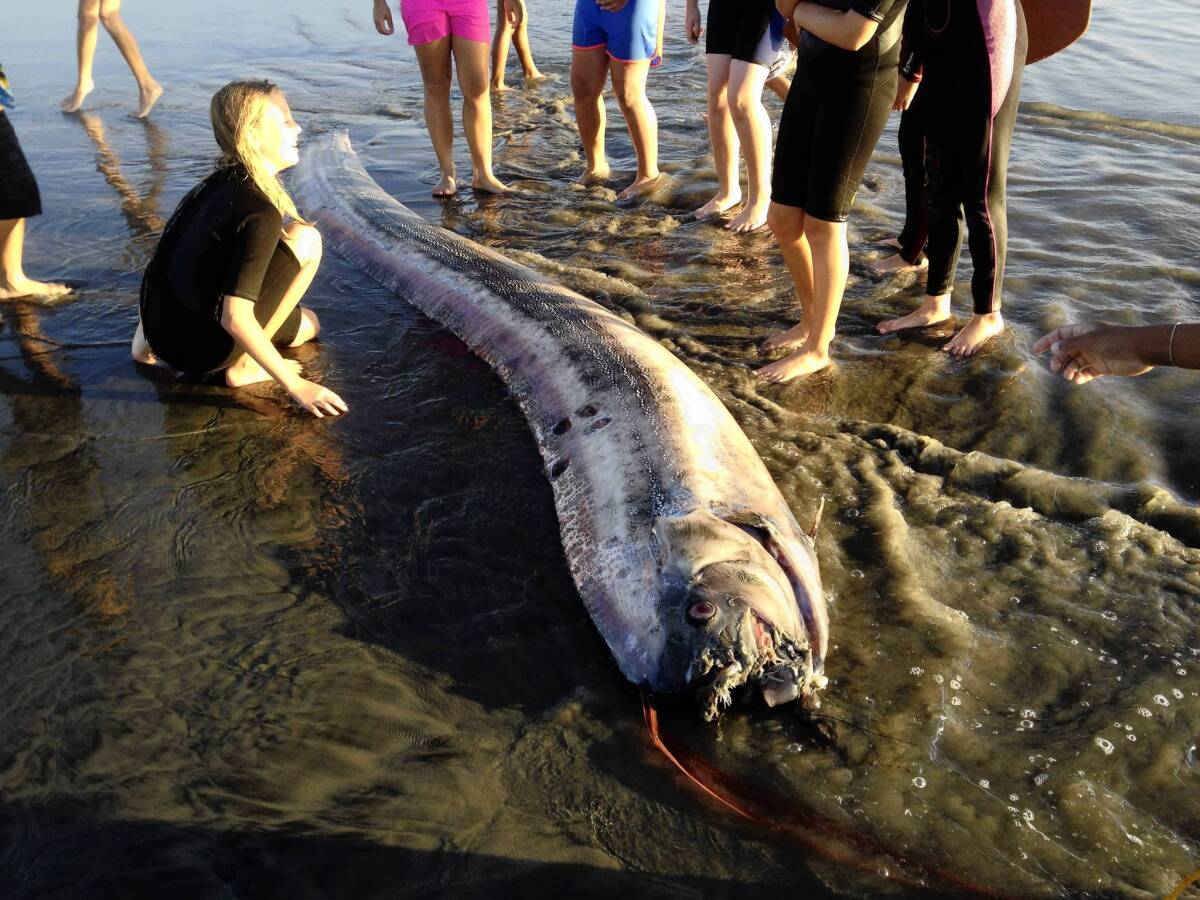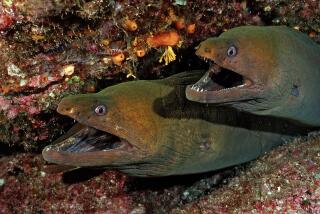Deaths of two giant oarfish may be linked, scientists say

Two rare, ribbon-like fish that washed up on Southern California beaches last week have puzzled and excited scientists, who know little about the creature that inspired sea serpent lore.
The oarfish, deep-sea dwellers that remain largely mysterious to researchers, have been seen underwater only a handful of times. What is known comes from the few carcasses that have washed ashore.
âIf all you knew about deer was road kill ⦠how much would you actually know about deer?â said Milton Love, a research biologist at the Marine Science Institute at UC Santa Barbara. âThatâs kind of where we are with oarfish.â
The 18-foot giant found off Santa Catalina Island on Oct. 13 was among the largest oarfish reported in nearly 20 years. A 14-foot fish beached in Oceanside on Friday was dissected and examined by scientists Monday.
Love said he believes that the deaths of the two fish are probably linked. The most likely cause was a current that carried the weak-swimming creature from still waters into a near-shore, more turbulent area, which they arenât adapted to surviving in.
Despite its menacing appearance, the serpentine, silver fish is toothless and heavy, with weak, flabby muscles. It glows slightly, and a ribbon-like dorsal fin waves along the length of its body as it hangs in the water, sucking down plankton and jellyfish, said Russ Vetter, who assisted in the smaller fishâs dissection and directs the fisheries resource division at the Southwest Fisheries Science Center.
The tissue will be divided and sent to research specialists around the world, who will look for clues about the creature and its habitat â its eyes, gills, heart and liver will be studied, its DNA will be sequenced for insight about the fishâs evolution and its ear bones will be examined to determine age.
The fishâs tissue will be tested for toxins, and data that could indicate low oxygen levels in the water will be examined as they become available, Vetter said.
Results from the research could take years to complete, scientists said.
âPeople from all around the world are desperate for a piece of tissue,â Vetter said.
Staff members at the Catalina Island Marine Institute considered burying their 18-foot oarfish carcass, which was too large to refrigerate. But experts at the Natural History Museum said the bones are so fine they would be crushed by the weight of the sand, said Jeff Chace, program director at the institute. The fish was divided among various research institutions because there was so much interest, he said.
The institute, which educates about 40,000 children a year, hopes to keep the skeleton on display, he said.
âOne of the neat things for kids is the unknown factor,â he said. âThese discoveries are happening all the time, and it gets kids excited about science.â
With more people snapping cellphone photos and posting videos of âstrange fish and fish doing strange thingsâ to social media, both the public and scientists are more aware of these occurrences, said Philip Hastings, professor and curator of the Scripps Marine Vertebrate Collection at UC San Diego.
âEveryone has a cellphone with a camera on it,â Hastings said. âSocial media allows us to distribute those, and get information back to scientists.â
As photos of the huge fish have made there way across the Internet, many theories have been offered as to why they died. One claim working its way around websites and blogs is that oarfish dying is a sign of an upcoming earthquake.
Experts, however, stressed that they have not pinpointed a cause of death.
âWith a rare event like this, it is a bit troubling, but itâs a total mystery,â Vetter said.
More to Read
Sign up for Essential California
The most important California stories and recommendations in your inbox every morning.
You may occasionally receive promotional content from the Los Angeles Times.











